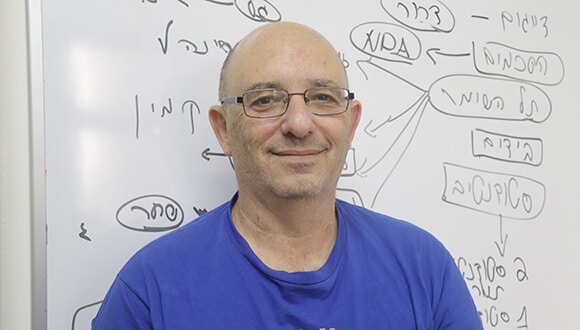A new material created from natural materials can move quickly through water and carry up to 40 times its own body weight

A new discovery by Tel Aviv University: mixing chiral crystals (which cannot overlap by rotating in space), with metals, creates a new material, a sort of "natural engine", which, when placed on water, can float on water and carry weight on its body of up to 40 times its weight. The researchers hope that the discovery will enable the development of new types of materials for a variety of uses.
What are Teva engines?
The research was conducted under the leadership of Dr. Itai Carmeli under the laboratory of Prof. Shahar Richter From metalwork to science and materials engineering At the Ivy and Alder Fleishman Faculty of Engineering and the Center for Nanotechnology at Tel Aviv University. The research was done in collaboration with Prof. Oswaldo Diagoz and Prof. Tovia Milo from Tel Aviv University, Prof. Hagai Cohen from the Weizmann Institute as well as other researchers from Ben-Gurion University and Tel Aviv, from Australia and the USA.
The researchers explain that in the 17th century a spectacular phenomenon was discovered: if you take pieces of camphor, a substance extracted from an Indian tree, and put them on the surface of the water - the pieces of wood start to 'dance' on the surface of the water. The chemical-physical explanation behind this phenomenon is natural engines. Camphor is a partially soluble and volatile substance, which allows its molecules to spread on the surface of the water and cause it to move. The effect that explains this phenomenon is called the 'Marangoni effect' and it concerns the effect of the transfer of material from one place to another on the surface tension.
In the current study, the research team from Tel Aviv University discovered new materials that behave in a similar way, and when placed on water, they begin to spin. The direction of their movement (clockwise or counterclockwise) is determined by the structure of the molecule that makes them up. These substances weigh only a few milligrams, but the researchers discovered that they can carry a load of up to 40 times their weight and also accelerate the speed. The researchers estimate that this is the fastest "artificial swimmer" that the world of science has found to date.
A new material that moves even in the dark
"In this study, we dealt with substances with chemical chirality. Chiral substances are molecules built from the same basic materials and with opposite symmetry, like our right and left hands. These materials have special properties that make them an interesting research object," explains Prof. Richter and expands, "We aimed the research at the synthesis and discovery of hybrid materials consisting of chiral molecules and nanometals, which will move with the help of light. And as happens many times in research, to our surprise we discovered a slightly different phenomenon: one of the hundreds of materials we created began to move around on the surface of the water independently even in the dark."
Later, Dr. Celine Bonio, who worked together with Dr. Carmeli on the project, realized that they had created a special Margon effect: "The structure of the chiral molecules, combined with the fact that some of them are soluble in water and some are volatile, created an unstable crystal, whose molecules are released and cause the rotation of the particle that They left, and that's how the engine was created. At the molecular level, the interactions cause a local change in the properties of the water and more precisely - in the surface tension of the water, which produces an uneven gradient of concentrations on the surface of the water and, as a result, pore movement," says Prof. Richter.
The basis for new and green engines?
"The whole process is done by mixing chiral crystals with metals, so that some of them move in a clockwise direction and some of them move in the opposite direction, depending on the chirality of the molecules of which they are composed. We discovered that the chirality causes differences in the melting energy of the crystal, which causes the crystal to rotate in a certain direction. After this discovery, we started thinking in the laboratory about what other uses and physical developments could be produced for this effect. When we added a repellent to the water with the hybrid particles (removing an electron - like a repellent that gives a flower), it dramatically accelerated the rotation of the particle to such an extent that even with a high-speed camera it was difficult to quantify the movement in its entirety," says Dr. Carmeli.
"Then, we also decided to try and add weight to the molecules and let them drag the crystal. The movement of the molecules continued even for a load weighing 40 times their weight. Today we manage to predict the movement of the crystals with an accuracy of about 80%, and believe that this new discovery holds the possibility of creating new and green engines in the future."
